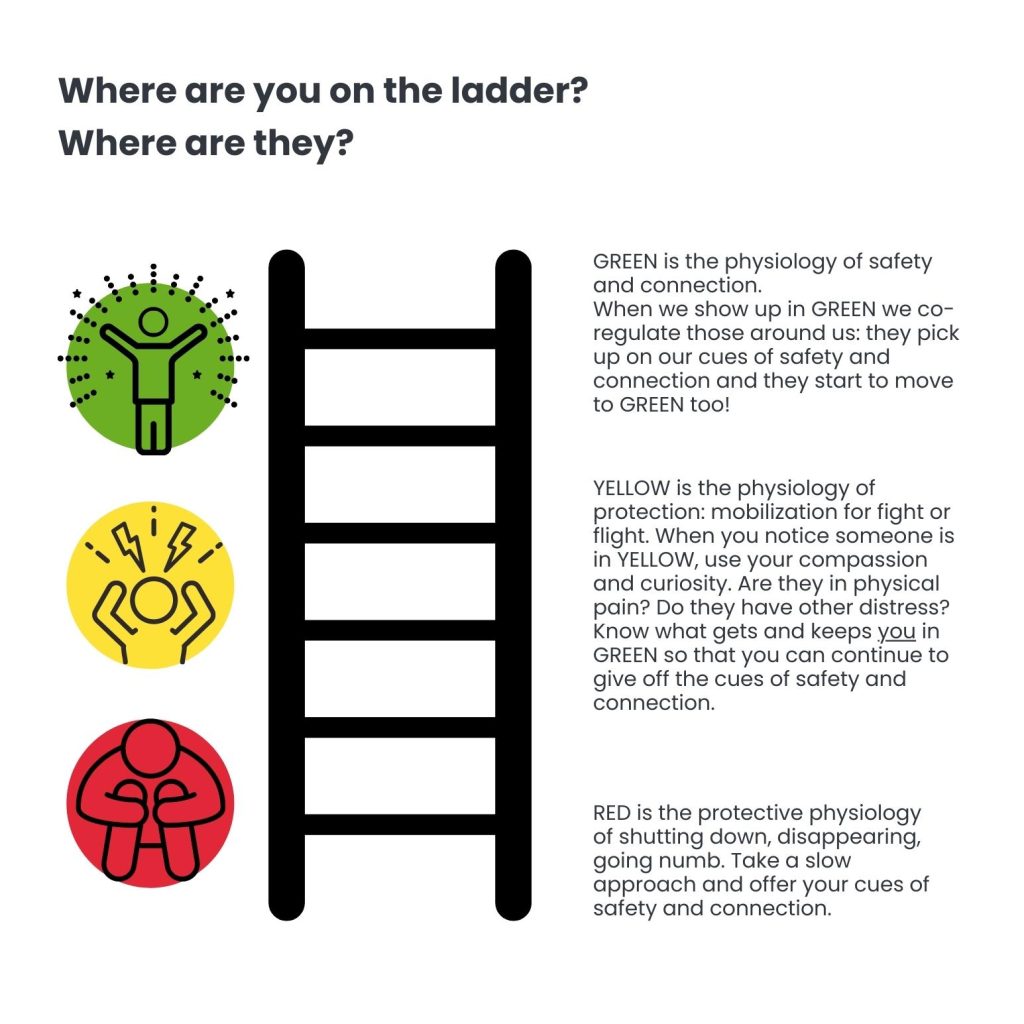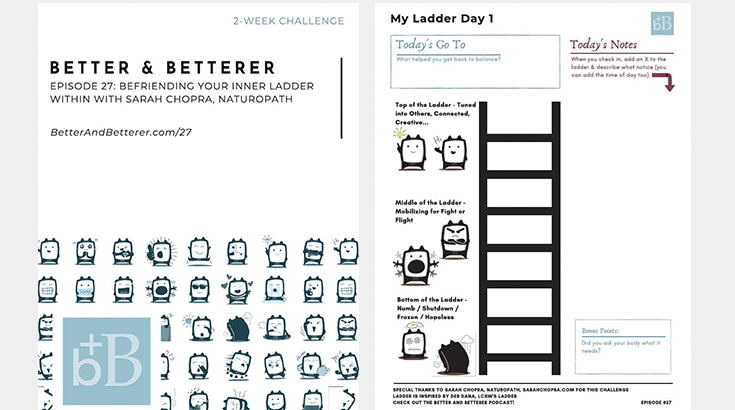In this episode, Jes speaks with Naturopath Sarah Chopra about her specialties, including the different states our bodies can be in, depending on if our nervous system thinks we’re safe or not. These states can be visualized as places on a ladder (per Deb Dana, LCSW’s work).
Grab the free PDF for this episode’s challenge below and find out more about Sarah online at sarahchopra.com and also @sarah.chopra.naturopath on Instagram. And don’t forget to subscribe to her podcast, The Gut Guru!

Neuroception refers to the behind-the-scenes (as in: unbeknownst to us) surveillance performed by our nervous system. It determines whether cues of safety and welcome outweigh those of danger and warning, and sends us into one of three main physiological states.
The first state, ventral, aka GREEN, is associated with feelings of safety and connection. It allows for regulation, organization, and reciprocity, even in high-energy situations. The second state, sympathetic, aka YELLOW, triggers fight or flight responses and floods the body with cortisol and adrenaline. It can lead to feelings of overwhelm, anxiety, and anger, as well as disorganized thinking and hypervigilance. If the nervous system does not feel that the sympathetic state has resolved the problem at hand, it can move into the third state, dorsal aka RED, characterized by shutdown, collapse, and immobilization.
Each state has its own emergent properties that affect how we think and feel. Ventral is associated with curiosity, presence, and engagement, while sympathetic limits our ability to problem-solve and focus on social engagement. In contrast, dorsal can lead to feelings of hopelessness and disconnection.
Many people today are struggling to regulate their nervous system and access the ventral state. However, being able to anchor yourself (mostly) in ventral can be a superpower that allows you to help co-regulate others. Rather than simply calming down, we need to “calm up” and access the qualities of ventral to make better decisions, see more possibilities, and become physiologically healthier.
2-Week Challenge:
Other Books/Etc We Mentioned on the Pod
- Deb Dana’s Polyvagal Flip Chart
- Deb Dana’s books: Polyvagal Exercises for Safety and Connection: 50 Client-Centered Practices and The Polyvagal Theory in Therapy: Engaging the Rhythm of Regulation
- Fiber Fueled by “Dr B” (Will Bulsiewicz, MD)
